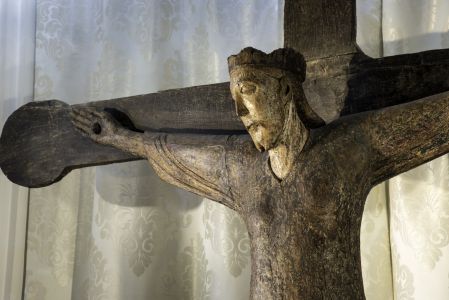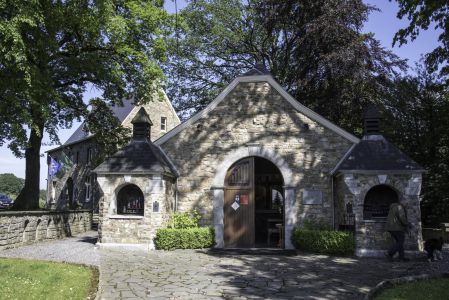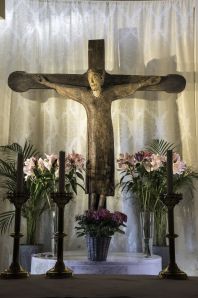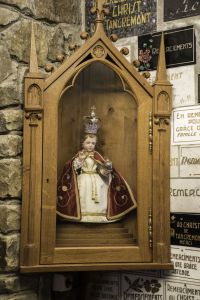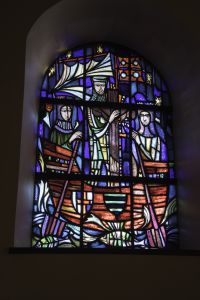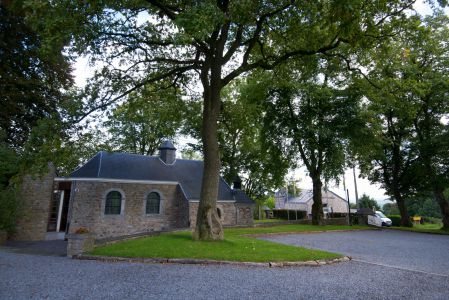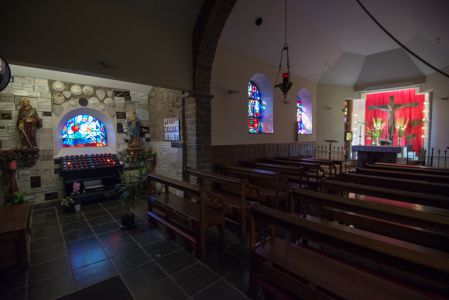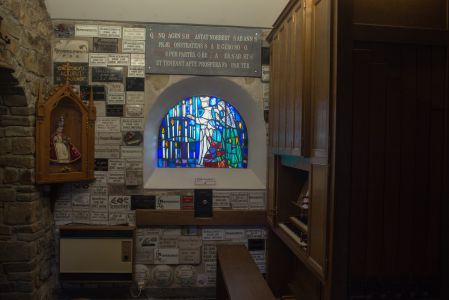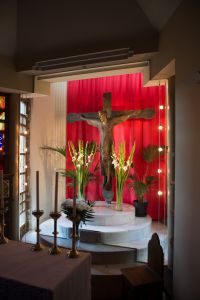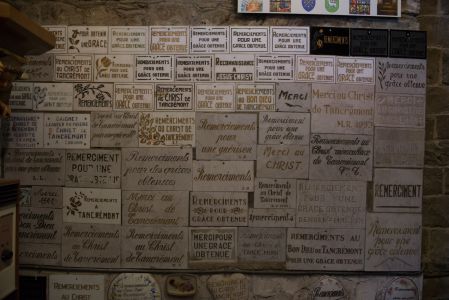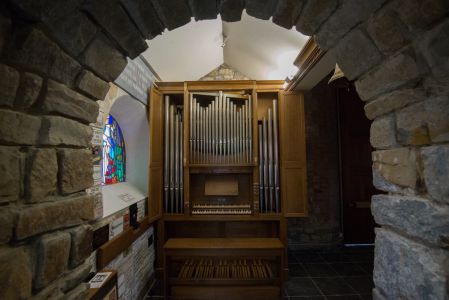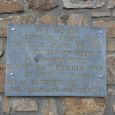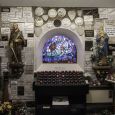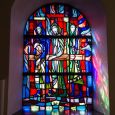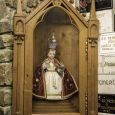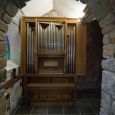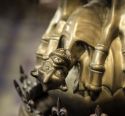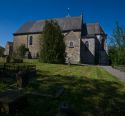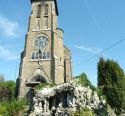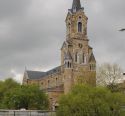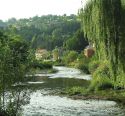Chapel | 1895 | | Catholic Church




Map
Opening hours
16 April - 30 September
Mon 8.00 - 20.00
Tue 8.00 - 20.00
Wed 8.00 - 20.00
Thu 8.00 - 20.00
Fri 8.00 - 20.00
Sat 8.00 - 20.00
Sun 8.00 - 20.00
01 October - 15 April
Mon 8.00 - 18.00
Tue 8.00 - 18.00
Wed 8.00 - 18.00
Thu 8.00 - 18.00
Fri 8.00 - 18.00
Sat 8.00 - 18.00
Sun 8.00 - 18.00
Guided tour
+32-87-54 15 09
Religious offices
Monday-Wednesday-Friday : 6 pm (1/04-30/09 : 7 pm)
Tuesday - Thursday : 8 am
Saturday : 6 pm
Sunday : 9 am • vespers at 4 pm
1st Saturday of the month : office at 9 am
Description
In a verdant environment in Tancrémont, between Pepinster and Banneux is this little chapel renowned for its large prominent cross, known as “Old Good Lord».
It is 2 metres high and a sorrowful, moving Christ is crucified on it. It was found in a field by a peasant in the 19th century. It had probably been buried during the French revolution and could have come from the nearby church of Theux. The carbon 14 method dates this well preserved cross from between 810 and 965. As proof of the faith of the inhabitants, this chapel was built in 1895 to hold and to put on show this happy discovery. It was restored in 1932 and again in 1986. Traditional religious services are celebrated here.
KIKIRPA : Photo-library online
Photos
Remarkable elements
The old cross
Called the "Old God", this cross dates from the end of the 9th century, beginning of the 10th century. We think it would come from the nearby parish of Theux. No longer in tune with current tastes, it was abandoned and relegated to a side chapel in the 18th century. She was then buried to protect her during the French Revolution.
Christ is dressed in a sleeved tunic (dovecote) that bears traces of polychromy, i. e. old colours. It is the oldest polychrome wooden columbium Christ in Belgium. It is housed in a specially built chapel.
Origin of the sanctuary
The history of the sanctuary is closely linked to the noble family del Marmol, as recalled by the commemorative plaque to the right of the entrance door. In the middle of the 19th century, the large wooden cross was found buried on the land of Simon Pirard, grandfather of the del Marmol family. The latter decided to shelter him in his chapel. Later, his descendants built a new chapel which they enlarged in response to the influx of pilgrims. At the same time, wishing to surround himself with a religious community, Baron del Marmol had a small monastery built right next to the chapel. A Benedictine community lived there for years before being replaced by Premonstratensians.
Ex-voto
At the entrance, the ex-voto in the form of a platelet testifies to the belief in the powers of the Old God of Tancremont.
Stained glass windows
The stained glass windows on the left tell the story of the arrival of the cross at Tancrémont. When they were drawn, it was thought that the cross came from the Holy Land. However, this belief has been undermined by the analysis of wood: Christ is carved in lime wood, a wood that did not grow there at the time. The stained glass windows on the right tell the story of the construction of the premises.
Several venerated saints
In the chapel are also venerated: Our Lady of Sorrows, Saint Faithful of Sigmaringen and the Child Jesus.
Organ
Depuis 2008, les orgues du facteur d’orgues Thomas (Ster, Francorchamps) accompagnent les offices liturgiques.Nearby
Circuit
The Vesdre region in the 19th century - car
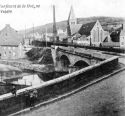
The Verviers Region at the time of the Industrial Revolution (car route) - Discover to what extent the wool industry has allowed the development of the villages around Verviers.



